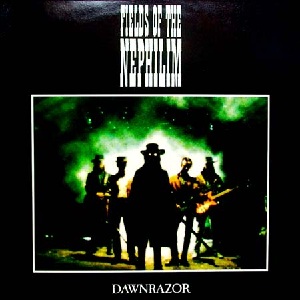|
Posts: 8193
Joined: July 4, 2002
|
“"It may be a total shock to some people to know that a typical 8-ohm four layer woofer voice coil contains about 120 feet of number 28 solid copper wire.”
I am not aware of any driver designers who would be surprised by that revelation. None I know buy into any of the more exotic wire beliefs, all attribute the magnitude of the effect of wire based on the wires individual components effect in an equivalent circuit.
“The "solid copper wire" is magnet wire that is usually very pure copper no matter what the source.”
But not for the reasons you might think, in order to make copper wire, the copper is processed after smelting (sort of a electrolytic plating process) to remove impurities like silver and gold , many of which impair the wire drawing process, soft pure copper is best.
Insulation, this too is chosen by it’s properties, magnet wire insulation has to be thin and tough, in some loudspeaker VC’s, it must stay intact at 350degrees C. For voice coils, an adhesive is usually added to the outer surface.
Old drivers never had power compression because the wire would melt off below that temperature, now we have high power voice coils where the temperature can reach or exceed 350C (the resistance of the wire has already doubled at 230C).
“The same reason the magnet wire gauge choice is made in the first place for voice coils - it's skin depth optimization for the frequencies covered and that just happens to work well (plus tighter coupling in the coils). “
Ah, no. From a driver design (engineering) view it is more like this.
The volume of the magnetic gap times density is proportional to cost.
The strength of the motor one creates is proportional to the BL / sqr root of Rdc.
The upshot is that for a given cost, the strength of the motor is optimized by minimizing the Rdc of the winding in that equation.
In the chart of conductors, copper is next to the best and the best is only a little better while being harder to work with and much more expensive.
Skin effect is a real thing, real at audio frequencies but irrelevant because the magnitude of the effect it has is insignificant. Curiously, the poorer the conductor the material is, the higher in frequency one needs to go for a given skin depth.
In drivers where one can trade a greater gap volume for lower mass, a lesser conductor like aluminum is often used. With aluminum, one has about half the conductivity but one fourth the mass so it is also used in voice coils and of course most overhead power wires.
Keep in mind, from a skin depth view a 10 ft long, 1 inch dia copper bar has a deviation that begins well within the audio band BUT if one plots it’s resistance ( impedance) vs frequency, then one sees even at 20KHz it still has a very very low resistance. Relative to the load it drives, it has an insignificant effect, this is what one would measure looking at each end of the wire and comparing the differences.
“A little extra wire resistance on mids/highs does not seem to hurt a lot when used as a speaker wire to it, when so much is already in the voice coils. Mids/tweeters might be better off with some other solution when driven directly from separate amps and electronic crossover, though. Different block diagrams have different optimum solutions for interface.”
This is true mostly. The drivers “motor” is electrically in series with the VC’s Rdc and so adding some resistance comparable to say a fraction of the Rdc, has minimal effect other than lowering the level. For a VC motor, it is CURRENT that produces force to move the radiator, it is the Voltage across the load that produces current flow.
This is still true at low frequencies BUT modern drivers are configured to use the amplifier as part of the system damping. Here a copper penny clamped across a woofers terminals replicated a very high damping factor, the drivers motor is in series with the Rdc, any motion of the motor produces a voltage which presents a current across Rdc which then produces an opposing force. If you have a woofer lying around in the open, place it on the table and tap on the radiator, then short the terminals together and try again.
Thus, for a woofer one does want a low series resistance, if one looks to see at what point there is no further change, it would be when the series R in the wire is about 1/20 to 1/40 the drivers Rdc.
That is why the amplifier damping factor wars in the 80’s were only a marketing numbers game, past about 20-50 had no effect on woofer control.
Hope that helps
Tom


|





